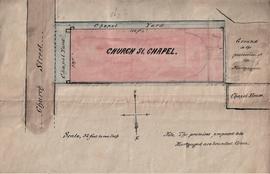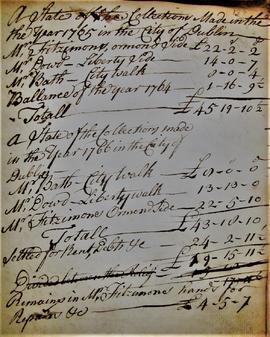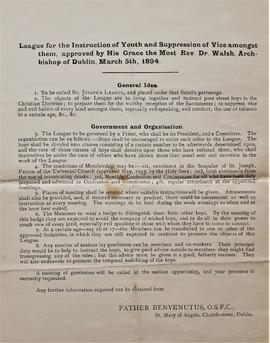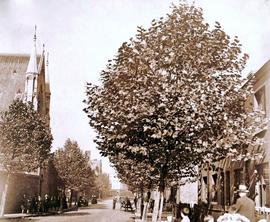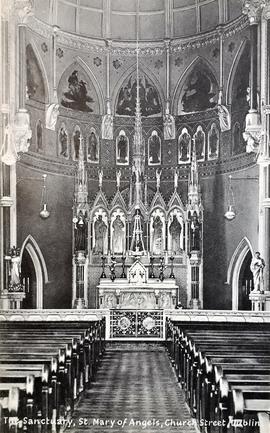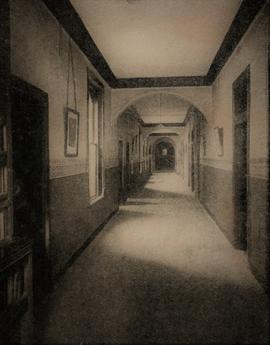Fund-seeking Fliers for St. Mary of the Angels
- IE CA CS/2/3/3
- Documento
- 25-6 Sept. 1877-1 May 1886
Parte de Irish Capuchin Archives
Flier for a Grand Bazaar to raise funds for the completion of the Church of St. Mary of the Angels, Church Street, Dublin. The prizes included: ‘30 fat sheep or £100 (1st); pony and phaeton or 50 guineas (2nd); Kerry cow’ (3rd); Diamond ring’ (4th); magnificent medallion, pure gold’ (5th); splendid Harp by Egan’ (6th).
The file also includes a flier for the ‘Lottery for the Marble Pulpit exhibited by the Operative Stonecutters’ Trade Association’, 1 May 1886 and a blank authorisation card for collectors for funds to pay off ‘the heavy debt on this Church and New Convent which is giving the Fathers much anxiety’. The card is authorised by Fr. Albert Mitchell OSFC. Another flier notes that ‘the new Church, which is now nearly completed, but over six thousand pounds in debt, is to be in every way worthy of being the temple of the Living God’. Reference is also made to the previous Capuchin chapel on the site: ‘The inhabitants of the neighbourhood are of the poorest class … at the ceremonies of religion in the old humble Church … the attendance of one thousand weekly attests the virtue of these poor Irish Catholics’. With a newspaper clipping from the 'Irish Press' referring to the discovery of a book of tickets for the said Grand Bazaar draw by Patrick Fitzsimons. The 'Irish Press' clipping is dated 20 October 1949.


